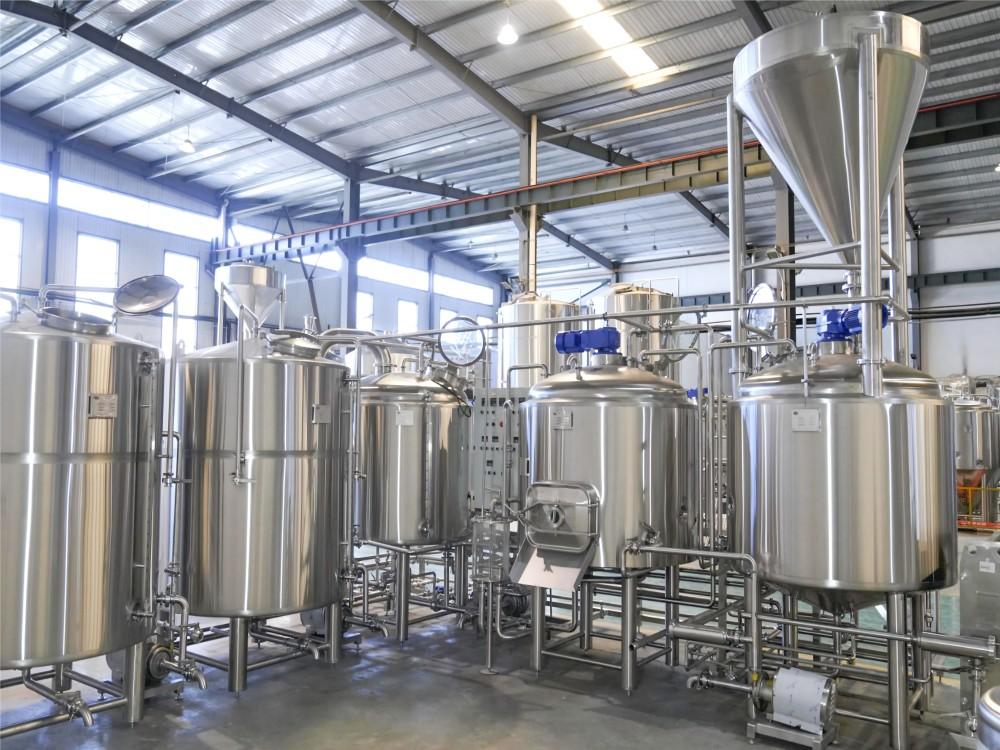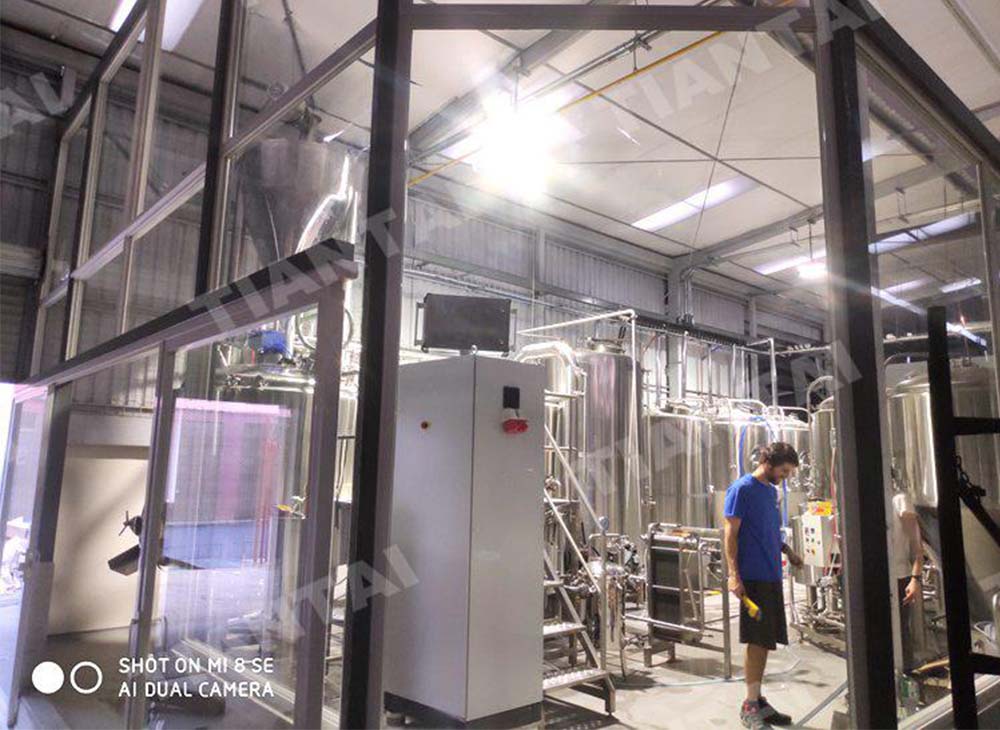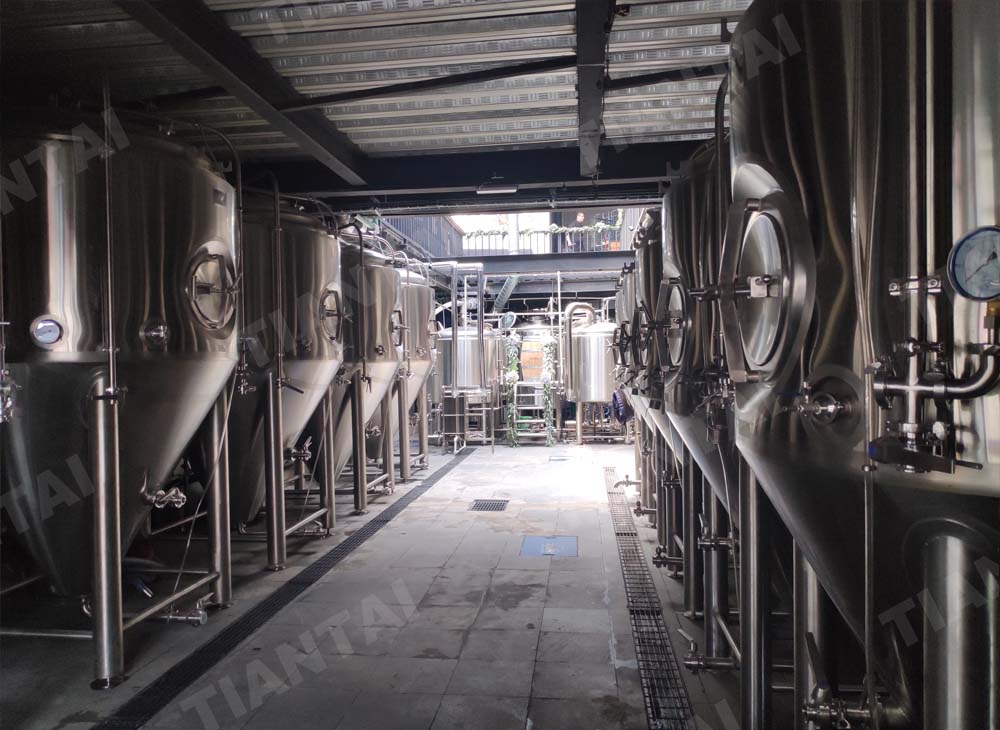Choosing Brewhouse Method Between Decoction and Infusion Mashing for Your Brewery
- Jan 23, 2025
- 135
- tiantai
Choosing Brewhouse Method Between Decoction and Infusion Mashing for Your Brewery
From a long time ago, beer has been people's favorite drink around the world. At the heart of every good beer is a careful brewing process. The brewing process of beer is complex and diverse and the brewhouse method is particularly crucial which determines the taste, flavor and texture of beer. At the same time, the mashing method determines the choice of beer equipment to a certain extent. The Decoction Mash and Infusion Mash have their own characteristics. When it comes to beer equipment, understanding these techniques is essential for brewers and breweries. Let's dive deep into the world of these mashing methods and explore how they influence the brewing process using state-of-the-art beer equipment.
Section 1: Decoction Mashing
1.What is Decoction Mashing?
Decoction Mashing is a traditional method that originated in Germany. It's been used for generations. The sugar and dry matter in malt are extracted at high temperature. This process requires that a part of mash be heated to boiling and then returned to the mash tun to heat overall temperature. This method can make the enzyme more active and extract more complex flavor substances. So the decoction mashing is suitable for beer with strong flavor such as Lager, wheat beer and so on. The decoction mashing process can be divided into single decoction mashing and double decoction mashing, depending on whether adjuncts are added.
1) Single decoction mashing: This method don’t add any adjuncts, only have mash. Pump a part of mash into the mash tun, gradually heated it to boil. Then mix it with the remaining unboiled wort to bring the combined wort to the higher rest temperature required for the next step. Based on the number of wort separations, single decoction mashing can be further divided into triple decoction, double decoction, and single decoction methods.
2) Double decoction mashing: In this method, unmalted grains like rice are used as adjuncts. The adjunct mash is processed separately in the gelatinization kettle before being combined with the malt mash in the mashing kettle. Based on the number of decoctions of the mixed mash, it can be categorized into triple-decoction, double-decoction, and single-decoction double-mash mashing methods.
2. Equipment of Decoction Mashing recommended
Precise temperature control: Decoction Mashing requires multiple heating and cooling, and our equipment is equipped with automatic temperature control system for accurate heating and cooling.
Efficient mixing: We use efficient mixing technology to avoid burning the bottom.
3. Advantage of decoction:
The boiling mash gives the beer a darker color;
The rich malt flavor makes the beer taste more full;
Multiple heating processes result in a more full-bodied wine
Section 2: Infusion Mashing
1. What is Infusion Mashing?
The infusion mashing is a much simpler way to save energy for lighter and lighter beers, such as Pale Ale etc.Infusion Mashing is different from
decoction mashing that it is done at a constant temperature. It don’t need to heat up and cool down again, usually at 65 to 68 degrees for a period of time.
Depending on whether adjuncts are added during the mashing process, it can be divided into single-mash infusion mashing and double-mash infusion mashing. The single-mash infusion mashing method can further be categorized into isothermal infusion mashing and temperature-rise infusion mashing.
1) Isothermal infusion mashing: The mashing temperature is around 65°C, and after 1–2 hours of mashing, it is raised to the filtration temperature of 78°C for filtering. This method is suitable only for malt with a relatively complete protein breakdown.
2) Temperature-rise infusion mashing: The mashing process begins at 35–37°C, held for 20 minutes, then raised to 50°C for protein breakdown. If the malt has good solubility, the process can start directly at 50°C, holding for 60 minutes, then gradually raising the temperature to 65°C and 72°C for step mashing. Finally, the temperature is increased to 78°C for filtration. This method is suitable for malt with good solubility.
3) Double-mash infusion mashing: After boiling the adjunct mash and mixing it with the main mash, the wort is not boiled again. Instead, the temperature is gradually increased in the mashing kettle to reach the required temperatures for each mashing stage. This method is commonly used by breweries producing pale beer with adjuncts.
2. Equipment of infusion mashing recommended
Infusion mashing is suitable for a few small craft breweries and craft lovers.
The equipment can accurately control temperature fluctuations within a set temperature range;
Easy to operate interface;
The equipment can be flexibly adapted to different batch requirements and is suitable for a variety of scale distilleries from small to medium size;
3. Advantage of infusion mashing:
Low energy consumption and easy operation;
The beer is more refreshing and less malty, which is suitable for pale beer style;
Method Feature Suitable for beer type
Decoction mash complex operation; Rich taste Lager, wheat beer
Infusion mash Simple operation; light taste Ale
So when it comes to choosing between infusion mashing and decoction mashing, there is no one best solution.
It depend on what beer do you want to brew and personal preference.
If you want to product a rich beer with a deep flavors, the decoction mashing may be a way to go.
If you don’t have too much time and equipment, or you prefer light beer, the infusion mashing may be a better opinion.

Ultimately, the key of successful beer brewing is keep trying and finding what flavor beer is your favorite. Whether you choice infusion mashing or decoction mashing, the most important thing is to have fun and enjoy the process of creating your own beer. In conclusion, decoction mashing and infusion mashing are two of the most common mashing techniques used in beer brewing for brewery. Each method has its own advantages and disadvantages, and the choice between them depends on a variety of factors. By understanding the differences between these two techniques, you can make an informed decision and choose the method that best suits your brewing needs. So go ahead and experiment with both boil-out and infusion mashing, and discover the magic of beer brewing for yourself. Friends, if you do not know how to choose the right brewhouse equipment, choose the right mashing method, welcome to contact Tiantai to get free consultation.
Edited by Amanda
Sales manager | Tiantai beer equipment
Email: tiantaisale@cnbrewery.com
From a long time ago, beer has been people's favorite drink around the world. At the heart of every good beer is a careful brewing process. The brewing process of beer is complex and diverse and the brewhouse method is particularly crucial which determines the taste, flavor and texture of beer. At the same time, the mashing method determines the choice of beer equipment to a certain extent. The Decoction Mash and Infusion Mash have their own characteristics. When it comes to beer equipment, understanding these techniques is essential for brewers and breweries. Let's dive deep into the world of these mashing methods and explore how they influence the brewing process using state-of-the-art beer equipment.
Section 1: Decoction Mashing
1.What is Decoction Mashing?
Decoction Mashing is a traditional method that originated in Germany. It's been used for generations. The sugar and dry matter in malt are extracted at high temperature. This process requires that a part of mash be heated to boiling and then returned to the mash tun to heat overall temperature. This method can make the enzyme more active and extract more complex flavor substances. So the decoction mashing is suitable for beer with strong flavor such as Lager, wheat beer and so on. The decoction mashing process can be divided into single decoction mashing and double decoction mashing, depending on whether adjuncts are added.
1) Single decoction mashing: This method don’t add any adjuncts, only have mash. Pump a part of mash into the mash tun, gradually heated it to boil. Then mix it with the remaining unboiled wort to bring the combined wort to the higher rest temperature required for the next step. Based on the number of wort separations, single decoction mashing can be further divided into triple decoction, double decoction, and single decoction methods.
2) Double decoction mashing: In this method, unmalted grains like rice are used as adjuncts. The adjunct mash is processed separately in the gelatinization kettle before being combined with the malt mash in the mashing kettle. Based on the number of decoctions of the mixed mash, it can be categorized into triple-decoction, double-decoction, and single-decoction double-mash mashing methods.
2. Equipment of Decoction Mashing recommended
Precise temperature control: Decoction Mashing requires multiple heating and cooling, and our equipment is equipped with automatic temperature control system for accurate heating and cooling.
Efficient mixing: We use efficient mixing technology to avoid burning the bottom.
3. Advantage of decoction:
The boiling mash gives the beer a darker color;
The rich malt flavor makes the beer taste more full;
Multiple heating processes result in a more full-bodied wine
Section 2: Infusion Mashing
1. What is Infusion Mashing?
The infusion mashing is a much simpler way to save energy for lighter and lighter beers, such as Pale Ale etc.Infusion Mashing is different from
decoction mashing that it is done at a constant temperature. It don’t need to heat up and cool down again, usually at 65 to 68 degrees for a period of time.
Depending on whether adjuncts are added during the mashing process, it can be divided into single-mash infusion mashing and double-mash infusion mashing. The single-mash infusion mashing method can further be categorized into isothermal infusion mashing and temperature-rise infusion mashing.
1) Isothermal infusion mashing: The mashing temperature is around 65°C, and after 1–2 hours of mashing, it is raised to the filtration temperature of 78°C for filtering. This method is suitable only for malt with a relatively complete protein breakdown.
2) Temperature-rise infusion mashing: The mashing process begins at 35–37°C, held for 20 minutes, then raised to 50°C for protein breakdown. If the malt has good solubility, the process can start directly at 50°C, holding for 60 minutes, then gradually raising the temperature to 65°C and 72°C for step mashing. Finally, the temperature is increased to 78°C for filtration. This method is suitable for malt with good solubility.
3) Double-mash infusion mashing: After boiling the adjunct mash and mixing it with the main mash, the wort is not boiled again. Instead, the temperature is gradually increased in the mashing kettle to reach the required temperatures for each mashing stage. This method is commonly used by breweries producing pale beer with adjuncts.
2. Equipment of infusion mashing recommended
Infusion mashing is suitable for a few small craft breweries and craft lovers.
The equipment can accurately control temperature fluctuations within a set temperature range;
Easy to operate interface;
The equipment can be flexibly adapted to different batch requirements and is suitable for a variety of scale distilleries from small to medium size;
3. Advantage of infusion mashing:
Low energy consumption and easy operation;
The beer is more refreshing and less malty, which is suitable for pale beer style;
Method Feature Suitable for beer type
Decoction mash complex operation; Rich taste Lager, wheat beer
Infusion mash Simple operation; light taste Ale
So when it comes to choosing between infusion mashing and decoction mashing, there is no one best solution.
It depend on what beer do you want to brew and personal preference.
If you want to product a rich beer with a deep flavors, the decoction mashing may be a way to go.
If you don’t have too much time and equipment, or you prefer light beer, the infusion mashing may be a better opinion.

Ultimately, the key of successful beer brewing is keep trying and finding what flavor beer is your favorite. Whether you choice infusion mashing or decoction mashing, the most important thing is to have fun and enjoy the process of creating your own beer. In conclusion, decoction mashing and infusion mashing are two of the most common mashing techniques used in beer brewing for brewery. Each method has its own advantages and disadvantages, and the choice between them depends on a variety of factors. By understanding the differences between these two techniques, you can make an informed decision and choose the method that best suits your brewing needs. So go ahead and experiment with both boil-out and infusion mashing, and discover the magic of beer brewing for yourself. Friends, if you do not know how to choose the right brewhouse equipment, choose the right mashing method, welcome to contact Tiantai to get free consultation.
Edited by Amanda
Sales manager | Tiantai beer equipment
Email: tiantaisale@cnbrewery.com



